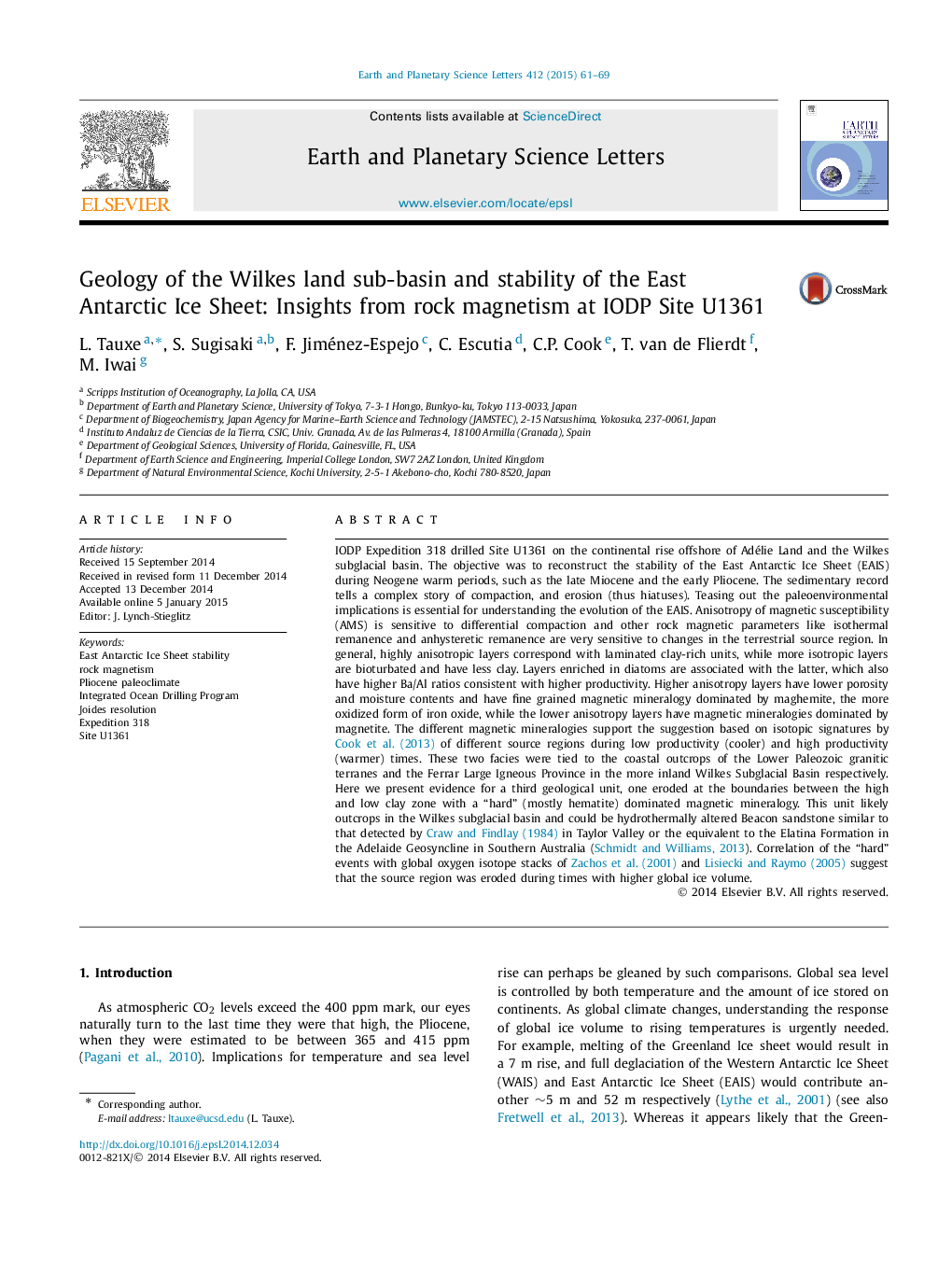| کد مقاله | کد نشریه | سال انتشار | مقاله انگلیسی | نسخه تمام متن |
|---|---|---|---|---|
| 6428631 | 1634744 | 2015 | 9 صفحه PDF | دانلود رایگان |

• Climate models predict growth of East Antarctic Ice Sheet with global warming.
• Records from IODP Exp. 318 show instability of the EAIS during the Pliocene.
• Rock magnetic techniques detect erosion of three distinct geological units.
IODP Expedition 318 drilled Site U1361 on the continental rise offshore of Adélie Land and the Wilkes subglacial basin. The objective was to reconstruct the stability of the East Antarctic Ice Sheet (EAIS) during Neogene warm periods, such as the late Miocene and the early Pliocene. The sedimentary record tells a complex story of compaction, and erosion (thus hiatuses). Teasing out the paleoenvironmental implications is essential for understanding the evolution of the EAIS. Anisotropy of magnetic susceptibility (AMS) is sensitive to differential compaction and other rock magnetic parameters like isothermal remanence and anhysteretic remanence are very sensitive to changes in the terrestrial source region. In general, highly anisotropic layers correspond with laminated clay-rich units, while more isotropic layers are bioturbated and have less clay. Layers enriched in diatoms are associated with the latter, which also have higher Ba/Al ratios consistent with higher productivity. Higher anisotropy layers have lower porosity and moisture contents and have fine grained magnetic mineralogy dominated by maghemite, the more oxidized form of iron oxide, while the lower anisotropy layers have magnetic mineralogies dominated by magnetite. The different magnetic mineralogies support the suggestion based on isotopic signatures by Cook et al. (2013) of different source regions during low productivity (cooler) and high productivity (warmer) times. These two facies were tied to the coastal outcrops of the Lower Paleozoic granitic terranes and the Ferrar Large Igneous Province in the more inland Wilkes Subglacial Basin respectively. Here we present evidence for a third geological unit, one eroded at the boundaries between the high and low clay zone with a “hard” (mostly hematite) dominated magnetic mineralogy. This unit likely outcrops in the Wilkes subglacial basin and could be hydrothermally altered Beacon sandstone similar to that detected by Craw and Findlay (1984) in Taylor Valley or the equivalent to the Elatina Formation in the Adelaide Geosyncline in Southern Australia (Schmidt and Williams, 2013). Correlation of the “hard” events with global oxygen isotope stacks of Zachos et al. (2001) and Lisiecki and Raymo (2005) suggest that the source region was eroded during times with higher global ice volume.
Journal: Earth and Planetary Science Letters - Volume 412, 15 February 2015, Pages 61–69